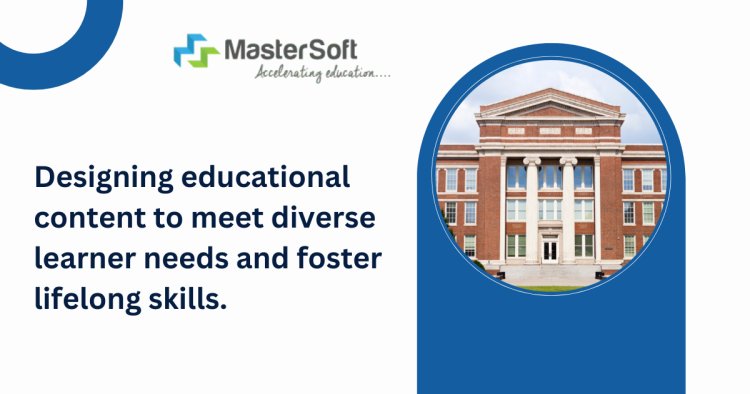A Comprehensive Guide to Curriculum Development
Unlock the secrets of effective curriculum development! Learn the key stages, essential strategies, and collaborative approaches to create engaging learning experiences for your students.
Share this Post to earn Money ( Upto ₹100 per 1000 Views )

The heart of any educational experience lies in its curriculum – the roadmap that guides students on their learning journey. Curriculum development is a meticulous process, meticulously crafting a program that fosters knowledge, skill development, and critical thinking. Imagine a blueprint for learning, thoughtfully designed to ignite curiosity, equip students with valuable tools, and prepare them for success. This blog delves into the world of curriculum development, exploring its core principles, key stages involved, and effective strategies for creating engaging and impactful learning experiences.
Unveiling Curriculum Development: The Art and Science of Learning
Curriculum development goes beyond simply selecting textbooks and outlining lesson plans. It's a strategic process that involves:
- Defining Learning Goals: Clearly articulate the specific knowledge, skills, and values students should acquire by the end of the program.
- Selecting Content: Choosing engaging and relevant content that aligns with the defined learning goals.
- Designing Learning Activities: Crafting engaging and interactive activities that provide students with opportunities to apply their learning.
- Developing Assessment Strategies: Establishing methods to evaluate student progress and measure the effectiveness of the curriculum.
These elements, woven together strategically, form the foundation of a robust curriculum.
From Vision to Action: Key Stages of Curriculum Development
Curriculum development unfolds in a series of crucial stages:
- Needs Assessment: Identify the needs and goals of the learners and the institution. Consider factors like student demographics, learning styles, and desired learning outcomes.
- Curriculum Design: Develop a clear framework for the curriculum, outlining learning goals, content selection, and instructional strategies.
- Content Development: Craft engaging and age-appropriate content that aligns with the goals and learning objectives. This may involve selecting appropriate learning materials, creating original content, or utilizing a combination of both.
- Implementation: Put the curriculum into action in the classroom setting. This involves selecting appropriate teaching methods, utilizing technology effectively, and fostering a positive learning environment.
- Evaluation and Improvement: Regularly assess the effectiveness of the curriculum and make adjustments as needed based on student performance and feedback. This ongoing process ensures continuous improvement and ensures the curriculum remains relevant and impactful.
A Symphony of Strategies: Tools for Effective Curriculum Development
Creating an engaging and effective curriculum requires a diverse set of strategies:
- Learner-Centered Approach: Shift the focus from content delivery to active student learning and participation. Encourage inquiry, problem-solving, and critical thinking.
- Integration of Technology: Utilize technology strategically to enhance the learning experience. This could involve incorporating multimedia resources, interactive activities, and online learning platforms.
- Differentiation: Cater to diverse learning styles and needs by offering a variety of instructional methods and activities.
- Alignment with Real-World Applications: Connect classroom learning to real-world scenarios and problems.
- Collaboration and Collaboration: Foster collaboration and teamwork among students to encourage communication and critical thinking skills.
Beyond the Classroom: The Wider Impact of Curriculum Development
The impact of curriculum development extends beyond the classroom walls:
- Shaping Future Generations: Well-designed curriculums equip students with the knowledge and skills necessary to be successful in a dynamic world.
- Preparing Students for Further Education: Effective curriculums lay a strong foundation for future learning, preparing students for the demands of higher education.
- Promoting Innovation and Critical Thinking: Learning experiences that encourage problem-solving and critical thinking skills contribute to a more innovative and adaptable future workforce.
- Building a Strong Society: Education plays a vital role in building a strong, informed, and responsible society. Curriculums that promote critical thinking, social responsibility, and ethical values contribute to this aim.
Embracing Collaboration: Working Together for Effective Curriculum Development
Curriculum development is rarely a solitary endeavor. Collaboration with various stakeholders is essential for success:
- Teachers: Teachers provide invaluable insights into student needs and learning styles. They play a crucial role in implementing the curriculum effectively in the classroom.
- Subject Matter Experts: Collaboration with experts in the specific subject area ensures the accuracy and relevance of the curriculum content.
- Parents and Community Members: Seeking input from parents and community members can provide valuable insights into the skills and knowledge students need to succeed in the local context.








